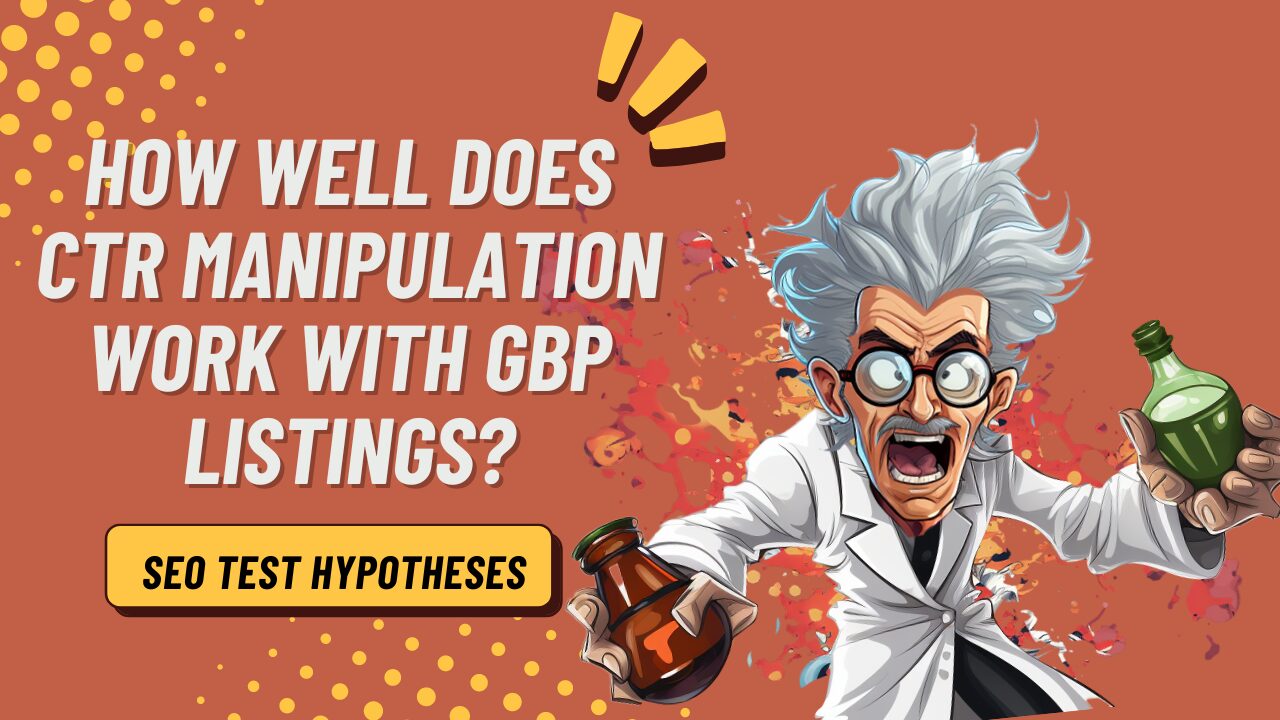Increasing Sales With Strategic CTR Control
In the affordable landscape of digital marketing, recognizing the nuances of click-through rates (CTR) is essential for driving sales. Strategic control of CTR can lead to boosted customer engagement and conversion prices, eventually profiting the lower line. By utilizing techniques such as engaging headings and targeted messaging, services can customize their strategy to satisfy the preferences of their target market. The process entails even more than simple changes; it calls for a comprehensive analysis of user actions and preferences. The ramifications of this approach may extend past prompt sales-- what exists under this surface area might redefine brand name loyalty.
Recognizing Click-Through Price
 Click-through price (CTR) acts as a vital statistics in assessing the effectiveness of electronic advertising and marketing campaigns. It represents the proportion of customers that click on a particular web link to the overall variety of individuals that view a web page, email, or advertisement . Revealed as a percentage, CTR provides beneficial insights into audience involvement and the relevance of the content being advertised.
Click-through price (CTR) acts as a vital statistics in assessing the effectiveness of electronic advertising and marketing campaigns. It represents the proportion of customers that click on a particular web link to the overall variety of individuals that view a web page, email, or advertisement . Revealed as a percentage, CTR provides beneficial insights into audience involvement and the relevance of the content being advertised.A high CTR shows that the web content reverberates well with the target audience, prompting them to act. On the other hand, a reduced CTR may indicate that the project is misaligned with customer assumptions or that the call to action is inadequate. Numerous elements can influence CTR, consisting of the top quality of the advertisement duplicate, the beauty of visuals, and the placement of links within the content.
By examining CTR information, organizations can determine which techniques are functioning and which require adjustment. As a fundamental metric, CTR plays a crucial role in the repetitive procedure of digital marketing, leading the method for more efficient approaches and far better interaction with prospective customers.
Significance of CTR in Sales
A strong click-through price directly correlates with sales performance, highlighting its importance in the sales channel. CTR serves as a critical indication of exactly how properly an advertising and marketing campaign transforms possible clients' interest right into workable steps. A high CTR represents that your target market locates your messaging compelling, which is crucial for driving web traffic to your sales web pages.
Additionally, a raised CTR can improve brand exposure and authority. When potential clients involve with your ads or emails, it fosters an impact of trust and significance, establishing your brand name as a best service in the market. This can cause boosted consumer commitment and repeat purchases, additionally bolstering sales figures.
Furthermore, a robust CTR can positively influence online search engine positions and advertisement positioning prices. Greater engagement rates signal to internet search engine and advertising and marketing platforms that your material is important, enabling you to take advantage of better positioning and potentially reduced prices for clicks.
Techniques for Efficient CTR Manipulation
Efficient manipulation of click-through rates (CTR) entails a calculated blend of compelling web content, targeted target market interaction, and data-driven optimization strategies. A well-structured headline not just ignites rate of interest however likewise motivates users to click via.
Next, using top quality visuals can additionally enhance CTR. Infographics, videos, or photos must be relevant and enticing, supplying a graph of the web content that tempts clicks. Additionally, using persuasive and clear calls-to-action (CTAs) can lead customers towards the desired action. CTAs must be succinct, action-oriented, and plainly placed within the web content.
 Segmenting your target market is one more vital technique. CTR Manipulation Press Release. Tailoring content and offers to certain demographics ensures that the messaging resonates more deeply, increasing the probability of clicks. A/B screening different components, such as headings, ctas, and photos, also supplies important understandings right into what drives higher CTR
Segmenting your target market is one more vital technique. CTR Manipulation Press Release. Tailoring content and offers to certain demographics ensures that the messaging resonates more deeply, increasing the probability of clicks. A/B screening different components, such as headings, ctas, and photos, also supplies important understandings right into what drives higher CTRAnalyzing Customer Habits
Comprehending user behavior is critical for optimizing click-through prices and improving general advertising strategies. By evaluating how customers engage with content, online marketers can identify patterns, choices, and pain points that significantly affect involvement. This analysis entails taking a look at metrics such as time invested in web page, scrolling behavior, and click paths to determine what resonates with the target market.
Division is important in recognizing individual behavior, as various demographics exhibit one-of-a-kind tendencies. For instance, more youthful users may move towards aesthetically abundant web content, whereas older audiences might like simple and clear messaging. A/B screening can even more improve understandings by contrasting variations in layout, messaging, and call-to-action components, permitting marketers to determine which this website options yield greater involvement rates.
Moreover, keeping an eye on customer comments with studies and social networks can provide qualitative data that enhances measurable findings. Recognizing the psychological triggers that drive user decisions is just as vital; leveraging this understanding enables the production of compelling material that encourages clicks.
 Eventually, a thorough evaluation of individual habits not just aids in enhancing click-through rates yet likewise educates broader advertising and marketing techniques, guaranteeing that campaigns are tailored to fulfill the progressing demands of the target market.
Eventually, a thorough evaluation of individual habits not just aids in enhancing click-through rates yet likewise educates broader advertising and marketing techniques, guaranteeing that campaigns are tailored to fulfill the progressing demands of the target market.Measuring CTR Success
Determining the success of click-through prices (CTR) needs a systematic technique that builds on understandings acquired from customer habits evaluation. To effectively determine CTR efficiency, companies have to develop clear objectives that line up with their general advertising objectives. This structure enables companies to track development with time and make informed modifications.
Trick efficiency indicators (KPIs) ought to be specified, consisting of target CTR portions based on market standards. Normal tracking of these metrics is vital, as it allows for the identification of abnormalities and trends. By segmenting data according to demographics, gadget kinds, and engagement levels, organizations can pinpoint which sectors execute best and customize their techniques appropriately.
A/B screening presents an additional beneficial tool in measuring CTR success. By explore different ad formats, headings, and contacts us to activity, organizations can recognize one of the most efficient mixes that reverberate with their target market. Assessing the relationship in between CTR and conversion prices provides deeper understandings right into the efficiency of advertising efforts.
Ultimately, a comprehensive technique to determining CTR success not only enhances campaign performance yet likewise notifies future techniques, driving sustained organization growth and enhanced customer involvement.
Final Thought
In final thought, calculated control of click-through prices (CTR) serves as an essential element in improving sales efficiency. Continuous analysis of customer actions and measurement of CTR success help with ongoing optimization of advertising approaches. GMB CTR Manipulation.
Strategic adjustment of CTR can lead to enhanced individual involvement and conversion rates, ultimately profiting the lower line. On the other hand, a reduced CTR Related Site might signify that the project is misaligned with user expectations or that the phone call to activity is inadequate.Reliable control of click-through prices (CTR) entails a strategic blend of compelling material, targeted audience interaction, and data-driven optimization methods.Gauging the success of click-through prices (CTR) requires a methodical approach that builds on insights acquired from user behavior you can find out more analysis. Continuous analysis of individual actions and measurement of CTR success help with ongoing optimization of marketing approaches.